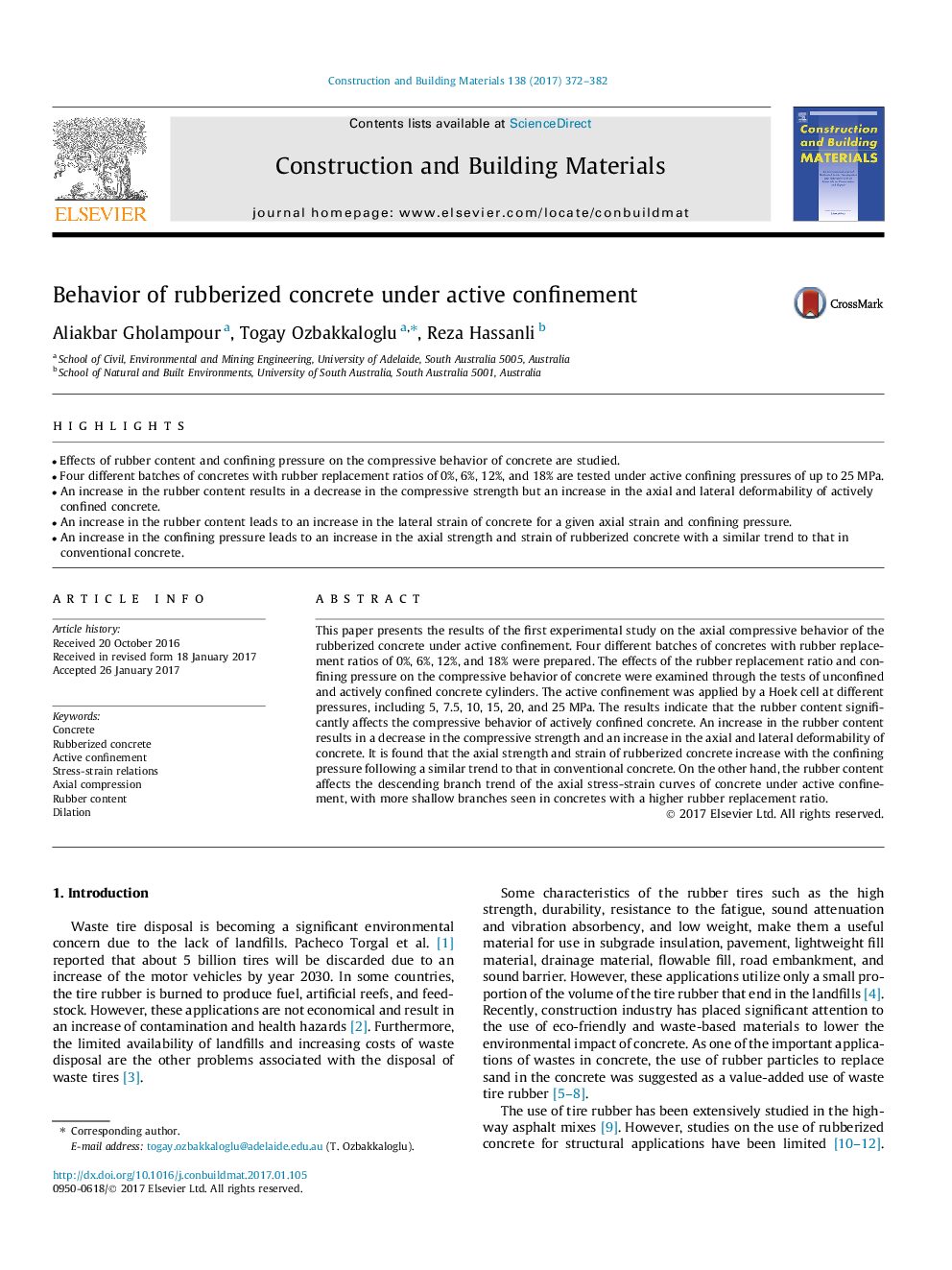| Article ID | Journal | Published Year | Pages | File Type |
|---|---|---|---|---|
| 4913727 | Construction and Building Materials | 2017 | 11 Pages |
Abstract
This paper presents the results of the first experimental study on the axial compressive behavior of the rubberized concrete under active confinement. Four different batches of concretes with rubber replacement ratios of 0%, 6%, 12%, and 18% were prepared. The effects of the rubber replacement ratio and confining pressure on the compressive behavior of concrete were examined through the tests of unconfined and actively confined concrete cylinders. The active confinement was applied by a Hoek cell at different pressures, including 5, 7.5, 10, 15, 20, and 25Â MPa. The results indicate that the rubber content significantly affects the compressive behavior of actively confined concrete. An increase in the rubber content results in a decrease in the compressive strength and an increase in the axial and lateral deformability of concrete. It is found that the axial strength and strain of rubberized concrete increase with the confining pressure following a similar trend to that in conventional concrete. On the other hand, the rubber content affects the descending branch trend of the axial stress-strain curves of concrete under active confinement, with more shallow branches seen in concretes with a higher rubber replacement ratio.
Keywords
Related Topics
Physical Sciences and Engineering
Engineering
Civil and Structural Engineering
Authors
Aliakbar Gholampour, Togay Ozbakkaloglu, Reza Hassanli,
